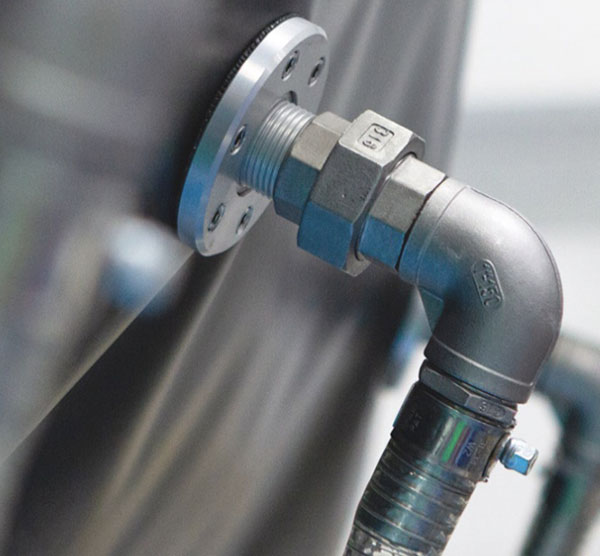Vacuum Chamber Leak Test Systems

Vacuum Chamber Leak Test Systems
Clean up your helium background. There is 5 ppm of helium in atmospheric air. To ensure you only send particles of helium that are leaking from/to our components to the mass spec during the test, it is very important to remove the residual helium from the test environment (the chamber) before the helium backfill. This is done by evacuating the test piece and the chamber to approximately 1 mbar to remove that partial pressure of helium from the environment. This pump down procedure is slightly elongated to ensure removal of all helium. Once this background read is stable it is time for the helium leak testing systems to act!
Create a pressure differential. Whether you have a dripping tap or dunking your bicycle inner tube in water and looking for bubbles you have a pressure differential. Your leak path will always follow the very basic physics principles and higher pressure will try to equalise with lower pressure around it. You must drive your leak path in the correct direction by pressurising the outside or the inside with helium (P1V1=P2V2). In a hard vacuum chamber machine this is done by following step 1 with a helium backfill to the relevant test pressure, approx 100 mbar for a fuel tank, upto to 500 bar for a fuel rail! You should always create your pressure differential during your leak test to mimic conditions your part will see in operation. This way leak paths are stressed in the same way they are in the field, where your part must be guaranteed!
Take the helium to the mass spectrometer. Typical vacuum pumping systems seen on helium leak detection systems lose speed at lower pressures. It is very important to ensure you have an appropriate response time to ensure any leakage from your test piece is actually picked up by the mass spec. This area is where so many mistakes are made by companies who have little vacuum or helium knowledge bases. Vacuum conductance, combined with a lower pumping speed and large chambers often lead to missed leaks. Calibration of your system can give you confidence your response time is well configured! Don’t let fancy looking, automated helium leak testing systems get away with conducting a poor leak test. It will come back to haunt you.
Know your leak rate threshold. Our favourite saying at VES is that everything leaks. All you can do is guarantee your product to a certain threshold. So now you know your mass spec is reading helium leaking, from or into, your product you need to know how much it leaks. EN 1779 rates hard vacuum leak detection to be able to detect leakage to 10-9 Pa⋅m3/s. Depending on your industry you might have to relate your leak rate to; a hole size (automotive), to a weight loss per year (HVAC) or the size of a virus (medical device). If your test piece leakage is less than your acceptable limit, it’s a pass!
The vent. Many thin walled products are very susceptible to damage during the vent. Any mismanagement of the pressure differential and your product may implode or explode. This is carefully managed by a PLC program and often monitored by deflection sensors in real time. Once this vent is complete, your product is good to go!